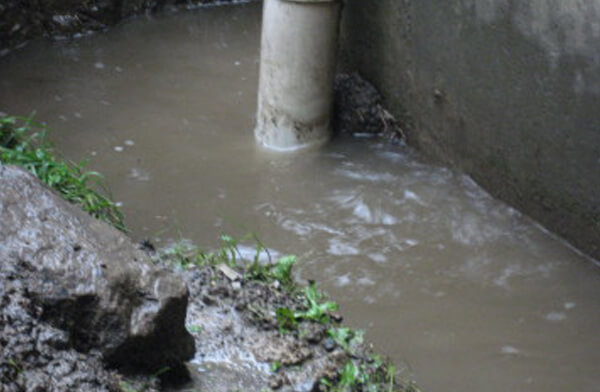How do you feel on the subject of Hacks to detect leaks?

Early detection of leaking water lines can mitigate a potential calamity. Some small water leakages may not be visible.
1. Check Out the Water Meter
Every house has a water meter. Examining it is a surefire way that aids you find leakages. For beginners, shut off all the water resources. Make certain no one will purge, make use of the faucet, shower, run the washing maker or dishwashing machine. From there, go to the meter as well as watch if it will alter. Because no person is utilizing it, there should be no motions. That shows a fast-moving leak if it moves. If you identify no changes, wait an hour or 2 and also examine back again. This indicates you may have a slow-moving leak that might also be below ground.
2. Inspect Water Intake
Evaluate your water expenses as well as track your water consumption. As the one paying it, you ought to see if there are any type of disparities. If you spot sudden changes, despite your intake coinciding, it indicates that you have leaks in your plumbing system. Keep in mind, your water expense need to fall under the same array monthly. A sudden spike in your bill indicates a fast-moving leak.
A stable boost every month, even with the same habits, shows you have a slow-moving leakage that's additionally slowly intensifying. Call a plumber to thoroughly check your home, especially if you feel a cozy location on your floor with piping underneath.
3. Do a Food Coloring Examination
When it pertains to water usage, 30% comes from bathrooms. Test to see if they are running effectively. Drop specks of food shade in the storage tank as well as wait 10 minutes. If the color in some way infiltrates your dish throughout that time without flushing, there's a leak in between the storage tank and bowl.
4. Asses Outside Lines
Do not fail to remember to check your outdoor water lines also. Needs to water permeate out of the link, you have a loosened rubber gasket. One tiny leak can squander loads of water and increase your water expense.
5. Inspect and also Examine the Circumstance
Homeowners must make it a habit to examine under the sink counters and also even inside cupboards for any kind of bad odor or mold growth. These 2 warnings indicate a leak so timely focus is called for. Doing routine assessments, also bi-annually, can save you from a major issue.
Examine for stainings and also weakening as many appliances and pipelines have a life expectations. If you suspect leaking water lines in your plumbing system, don't wait for it to escalate.
Early detection of dripping water lines can minimize a possible catastrophe. Some tiny water leakages may not be visible. Examining it is a guaranteed way that aids you find leaks. One little leak can squander tons of water and also surge your water costs.
If you presume leaking water lines in your plumbing system, do not wait for it to rise.
How to Know If Your Home Has a Hidden Leak
Water Meter Reveals Inexplicable Water Usage
If you’d like to test whether or not there’s a leak somewhere in your home, you can do this using your water meter. Here is how to conduct the test:
Don’t use any water in your home for at least 30 minutes; this also means not turning on faucets or water-using appliances.
Go outside, and check your water meter for activity.
If your water meter shows that there was activity, even though no one was using any water, this proves that there is a leak in your home.Visible Mold or Mildew Growth
Leaks behind walls create moist, dark environments that allow mold and mildew to grow and thrive. Eventually, you might see mold growth forming on the wall closest to a hidden leak.
If mold is growing in an area that receives a high amount of moisture, such as a bathroom, it may simply be an indication that better ventilation is needed. However, if you see mold growth on a wall or the ceiling in an area where you would not expect, you probably have a hidden leak.
Musty, Mildew Odor
Sometimes you might not be able to see the mold or mildew that is growing as a result of a leak. However, the smell can give the problem away just as easily. If you catch a whiff of something musty, there’s a good chance that old water is collecting somewhere in your home that you can’t see.
Stained/Warped Walls, Ceilings, or Floors
When your home soaks up water, a variety of red flags can become visible, including ceiling stains, bubbling drywall, warped walls, and sagging floors. While these issues can be caused by excess humidity, they can also be signs that a pipe or plumbing connection has started leaking behind your walls.
Inexplicably High Water Bill
After a while, you get a general sense for what your water bill should be. If you own a pool or sprinkler system, your bill will tend to be higher during summer. However, if you receive a water bill that seems especially high, and you can’t figure out what caused it, then you may have a hidden leak somewhere that’s increasing your bill.
https://www.plumbingjoint.com/blog/2019/july/how-to-know-if-your-home-has-a-hidden-leak/

We had been shown that article on Locating water leaks through a friend on our other web property. Don't hesitate to take the time to share this post if you enjoyed reading it. I treasure reading our article about Hacks to detect leaks.